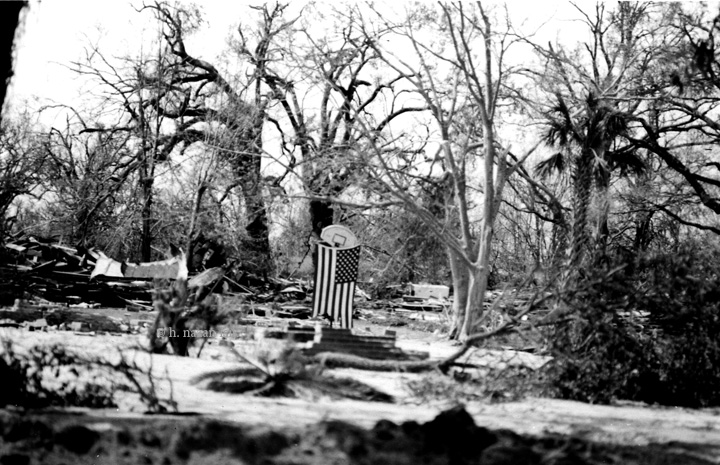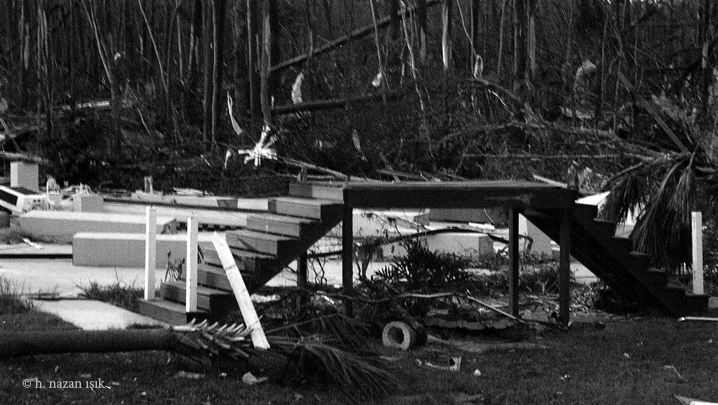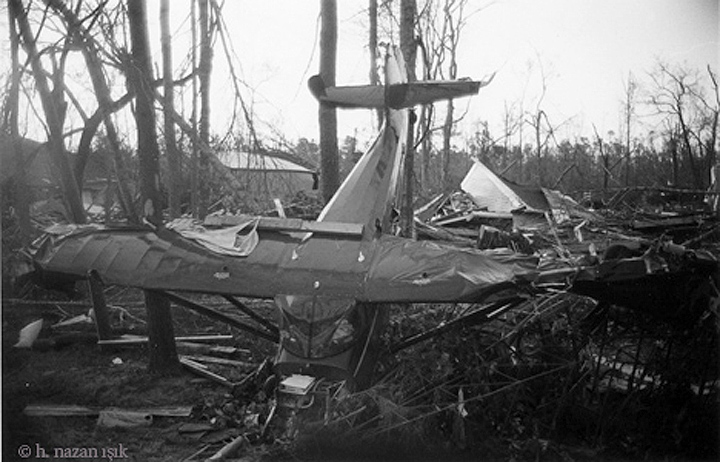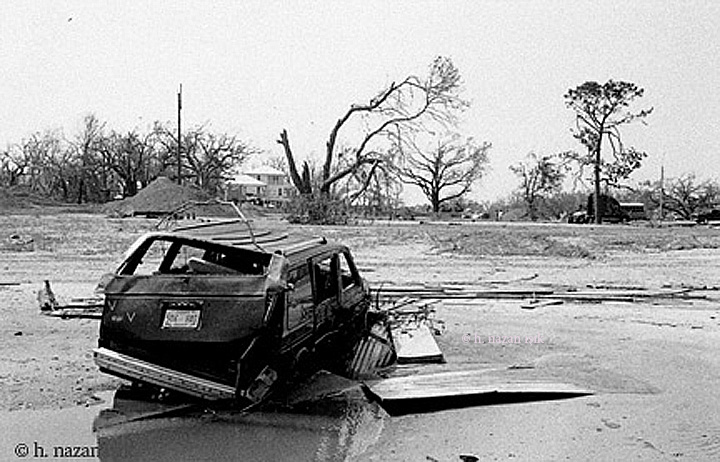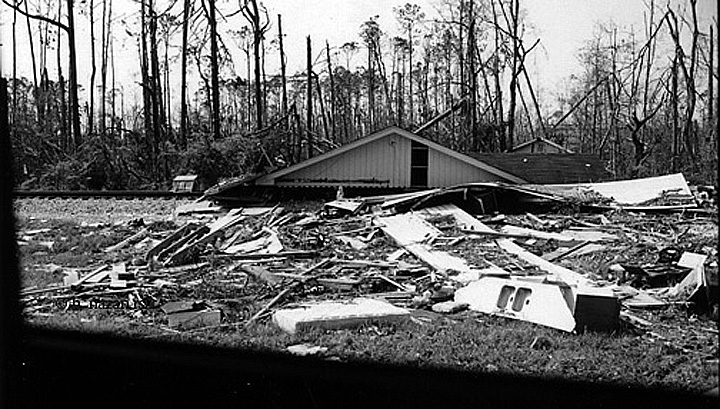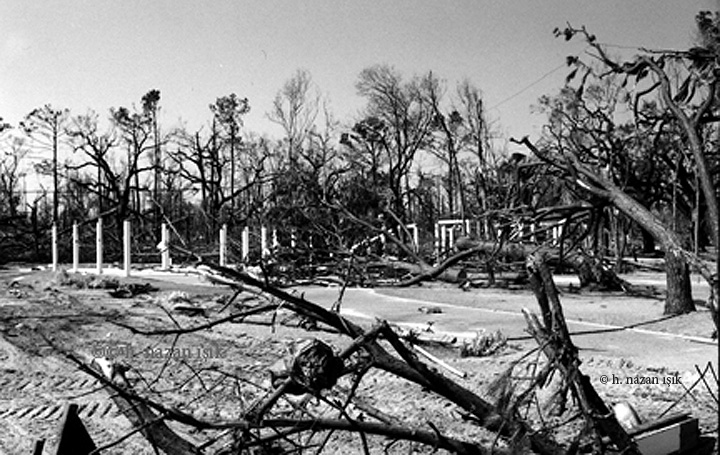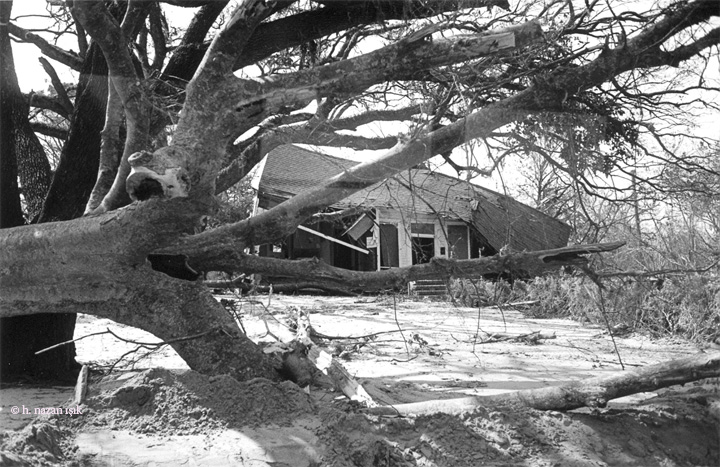h. nazan ışık—
7 September 2015—
© h. nazan ışık
A basketball hoop, left behind after Katrina in a house garden, in Bay St. Louis, Mississippi, decorated by the flag
It was September 7, 2005. Ten years ago today. Right after Hurricane Katrina, I heard that a group of people in New York were collecting donations at Lincoln Center for the Katrina victims and were looking for drivers to take them to Louisiana. I went there at 9 p.m. There were hundreds of volunteers organizing, packing and loading the 100 tons of donated supplies onto the trucks.
On Thursday morning at 7.00 a.m., Hector Hoyos, the organizer, and 57 volunteer drivers were ready to go. 57 strangers: a firefighter, a cop, an ex-con, a retired stock broker, a bartender, a flight attendant, a KFC worker, a correction officer, a nurse…etc, all from different backgrounds united with the same reason, with the same passion. 10.00 a.m. the convoy, 18 trucks (17 of them rented by Mr. Hoyos, the other one donated by “Moveit4less”, a moving company) and two 18 wheel tractor-trailers donated by the disaster relief agency Feed the Children, and a bus to carry spare drivers, started the 36-hour journey to Baton Rouge, Louisiana.
Our first stop was, Stennis International Airport, in Bay Saint Louis, Mississippi. The airport was used as a drop-off location, managed by U.S. Marines and the National Guard. Most of the trucks were unloaded there. Water, food, medicine, clothes, toilet supplies etc. Also, there was a command center. Emergency management officers from several counties in Florida were there to coordinate the process.
A gentleman from the Saint Louis County Fire Department took us on a tour of the area. He showed us a water line caused by the storm surge. It was 20 feet high and we were still 4.5 miles inland.
© h. nazan ışık
Just the stairs. What was left from a house in Bay St. Louis.
On our way toward the Gulf, the damage was enormous. We saw SUV’s in the mud or turned upside down, a boat on its side, the roof of a house on the railroad tracks. Everything looked like massive toys tossed aside by a giant.
© h. nazan ışık
A plain landed in a garden of a house looked like a big toy.
© h. nazan ışık
A SUV on the beach after Katrina in Bay St. Louis.
© h. nazan ışık
The roof of a house on the railroad tracks.
The damage got worse as we approached the beachfront. Roads were blocked. Trees were down. The bridge to Pass Christian was destroyed.
As we headed West the damage was even worse. It was hard to believe that New Orleans was the real focus of attention. Amazing to consider why Mississippi was so neglected by the Press.
© h. nazan ışık
Our second and last stop was “Women’s Hope Center” in Baton Rouge. We were there with diapers, car seats, wipes, baby food, toys, all donated by New Yorkers, and met some of the survivors. Among them
were six women with their newborns, most of whom were born just before or during Hurricane Katrina at Women’s Hospital in Baton Rouge. Everybody talked to each other, hugged each other.
Everybody was so happy. I asked Mr. Hoyos again “How do you feel now? Why did you really do it?.“
Hector Hoyos, a businessman, who organized this relief effort, said: “The idea came from frustration. I was frustrated, because, first of all, I did not see our government reacting rapidly enough, and secondly, I went to the Red Cross to donate some supplies. They did not take them, they did not want them. All they wanted was money. And I saw many others who were turned away as well. There are many people who do not want to give money. They don’t trust how that money will be used. So, they would rather give supplies.” So he decided to take supplies to Katrina victims himself and called his relief effort “American Family Drive.”
“Great!” he said, “To see hope and faith, to see joy in those people’s eyes was priceless. It was money well spent.”
© h. nazan ışık
Photos :© h. nazan Işık, All rights reserved
Page 2

